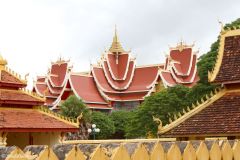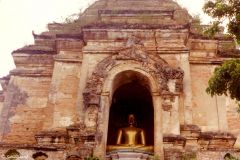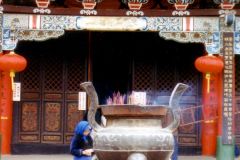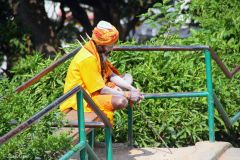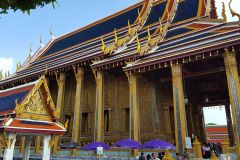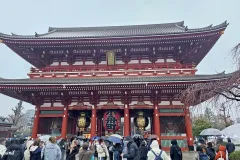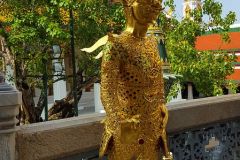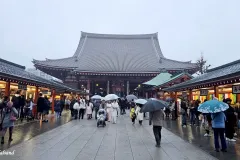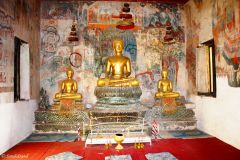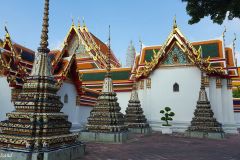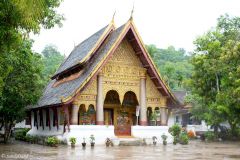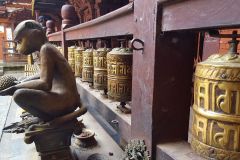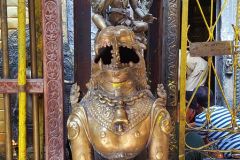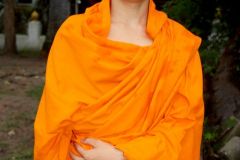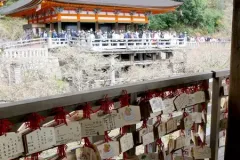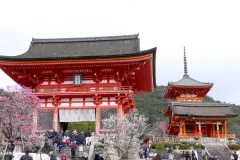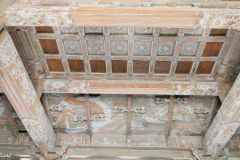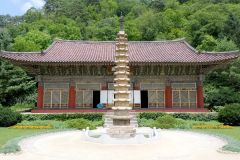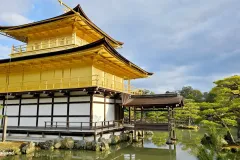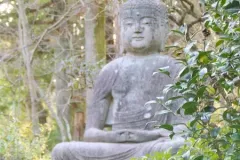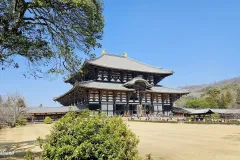Buddhist places of worship: Buddhism spread out of India from around the 4th to 6th century BC based on the thoughts and principles of the awakened one, Siddharta Gautama.
The Buddhist religion divided into two branches, Therevada and Mahayana, and within them a number of schools. The former is predominant in Sri Lanka and Southeast Asia, while the second developed in East Asia. The featured image on this post is from Chiang Rai, Thailand.
Myanmar
We find in Southeast Asia a number of Buddhist places of worship. Some of them are part of rather extravagant construction works. Myanmar boasts some of the most fantastic complexes of Buddhism anywhere.
The several thousands of small and large temples scattered on the plains of Bagan in the northwest of Myanmar are undoubtedly a gem on Earth. And so might be said of the golden stupa of Shwedagon in the country’s former capital of Yangon (Rangoon). The Shwedagon is by far the only gilded pagoda in Myanmar.
Shwezigon Paya in Bagan, Myanmar (Burma)
Tibetan Buddhism
Tibetan Buddhism is not only found in Tibet, but also in Bhutan, Mongolia and even China – to mention some. This school is known for its rich ceremonies, monasteries, and for the emphasis on techniques in yoga and meditation.
I found it extremely thrilling to witness how the devout followers in Tibet were circling the Jokhang temple in Lhasa. They would stand with their arms stretched up, then lie down and stretch out on the ground. This ritual was repeated in a slow movement all around the temple before they would enter it.

Devout buddhist in Lhasa, outside the Jokhang temple.
In Mongolia the Communist leadership banned religion, killed believers and destroyed most places of worship. The one in this video reopened only a few years ago. In 2011 I also went to a Lama temple in Beijing, featured in a video here. In both temples I got the clear notion that the believers were unsure of how to behave: They were learning religious customs that had been long forgotten or at least hidden.
Zen Buddhism
Zen is another school within the Mahayana Buddhism branch. It developed in China and spread to Vietnam, Korea and Japan. They emphasise meditation, not knowledge of sutras and doctrine. I loved the tranquillity I found in the temple gardens of Kamakura and Kyoto in Japan.
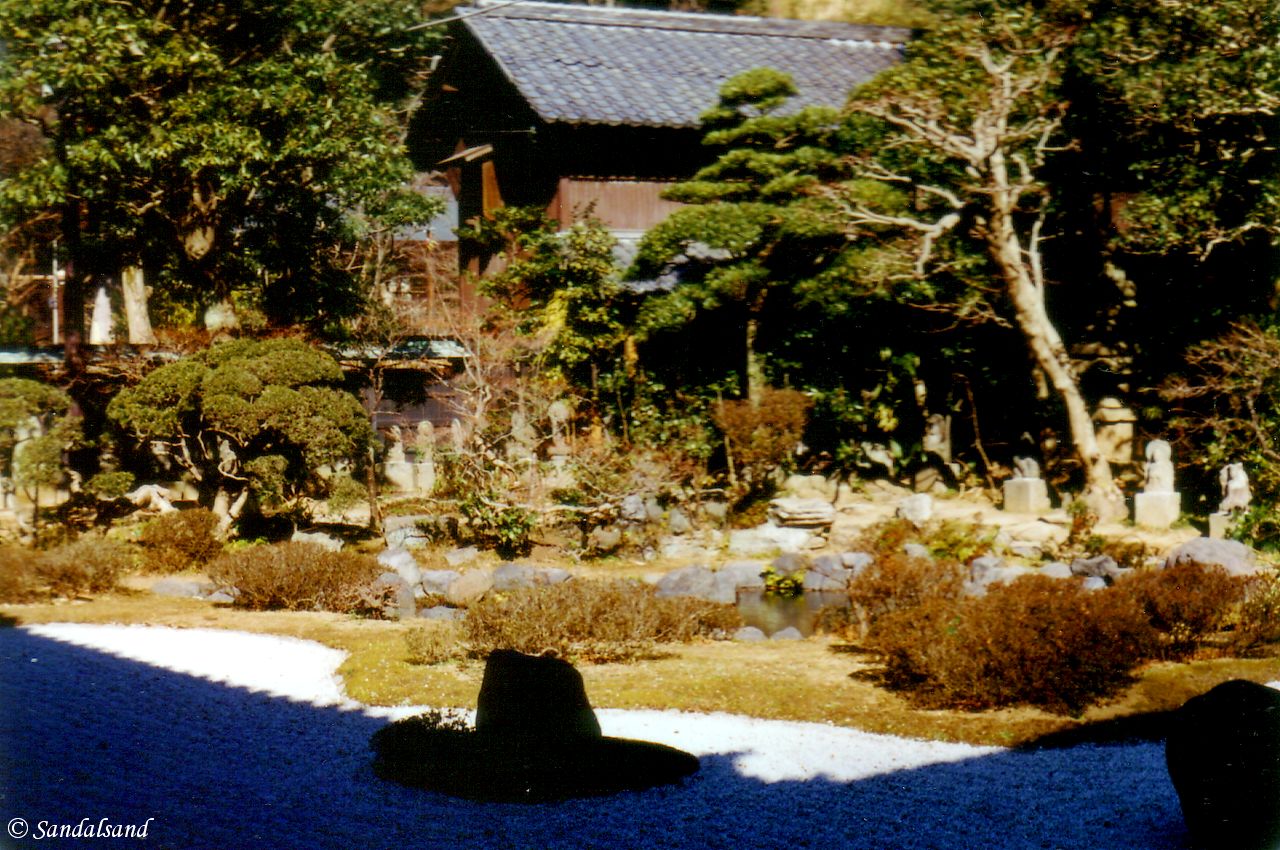
Kamakura temple garden. The gardens in Japanese Buddhist temples are very elaborate. A little dam, raked gravel in defined patterns, rocks, trees, bushes and plants put together into a delicate whole. Japanese gardens are real art treasures. Here monks, believers and others can come and relax, philosophise and meditate on the central truths of life.
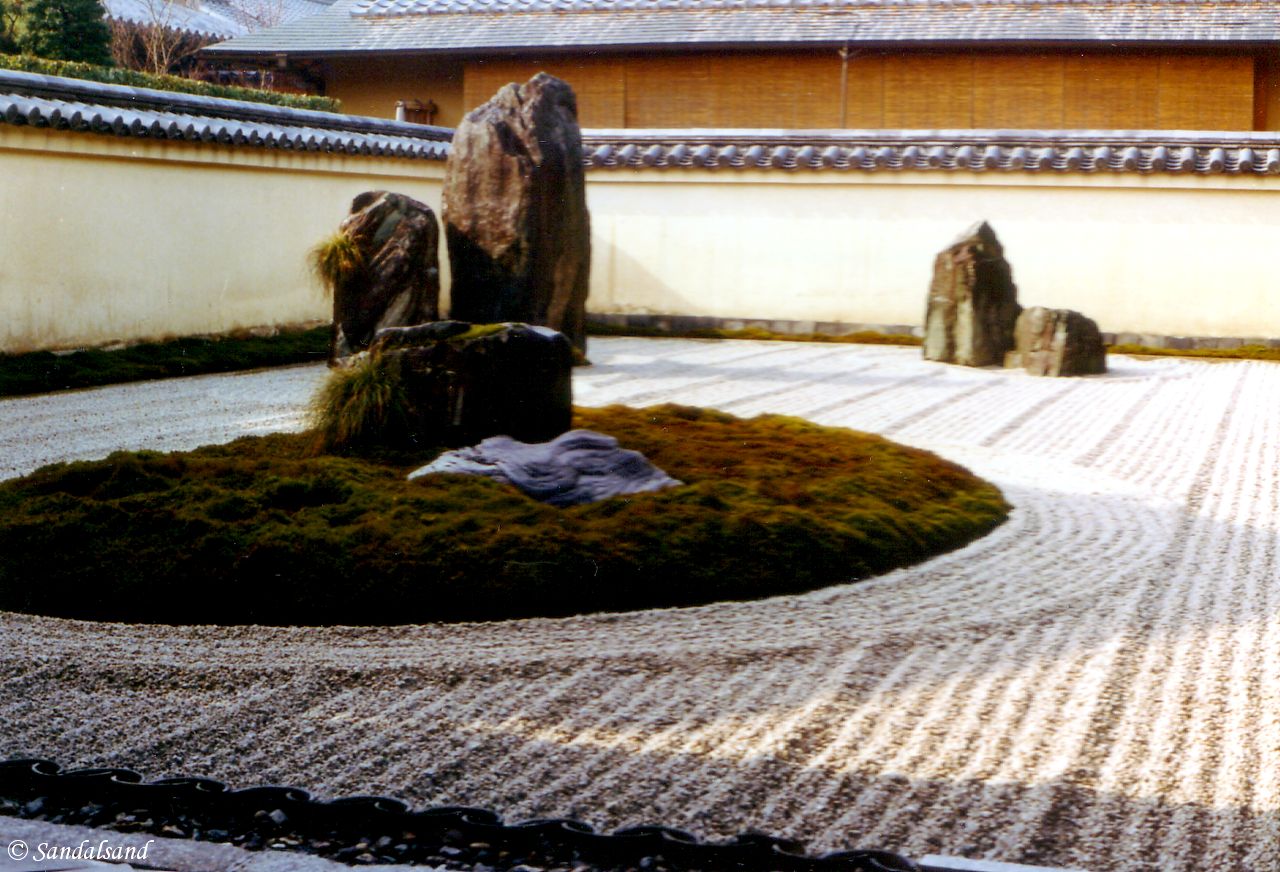
Raked gravel in Ryoanji Buddhist temple, Kyoto. This is the universe. Symbolised. Amazing.
It is fascinating how the Japanese counterbalance their extremely hectic life with the tranquility of their temple gardens. I found it amazing, but then again, Japan is a country full of contradictions.
Laos
And now, over to something completely different, Laos. This is a country that for a long time was off-limits to foreign visitors. Luang Prabang is a town in northern Laos. It has managed to take care of a large number of incredibly beautiful temples – Buddhist temples. This has of course not been overlooked by the international community which put the entire city centre on the World Heritage List. It might be a struggle to keep the town low-key in the midst of an ever growing tourist traffic, but at least I arrived there before the flood. Here is a picture, and there are more in my article from Luang Prabang.

Wat Si Bun Heuang in Luang Prabang, Laos
Read more
Articles about religious buildings:
(1) Introduction
Theme I, Places of worship:
(2) Christian places of worship
(4) Buddhist places of worship
(5) Other contemporary places of worship
(6) Places of worship for extinct religions
II, Monasteries and educational institutions (chapter 7) Read
III, Housing for the deity itself or its premier representatives (chapter 8) Read
IV, After death (chapters 9-12) Read the first



































